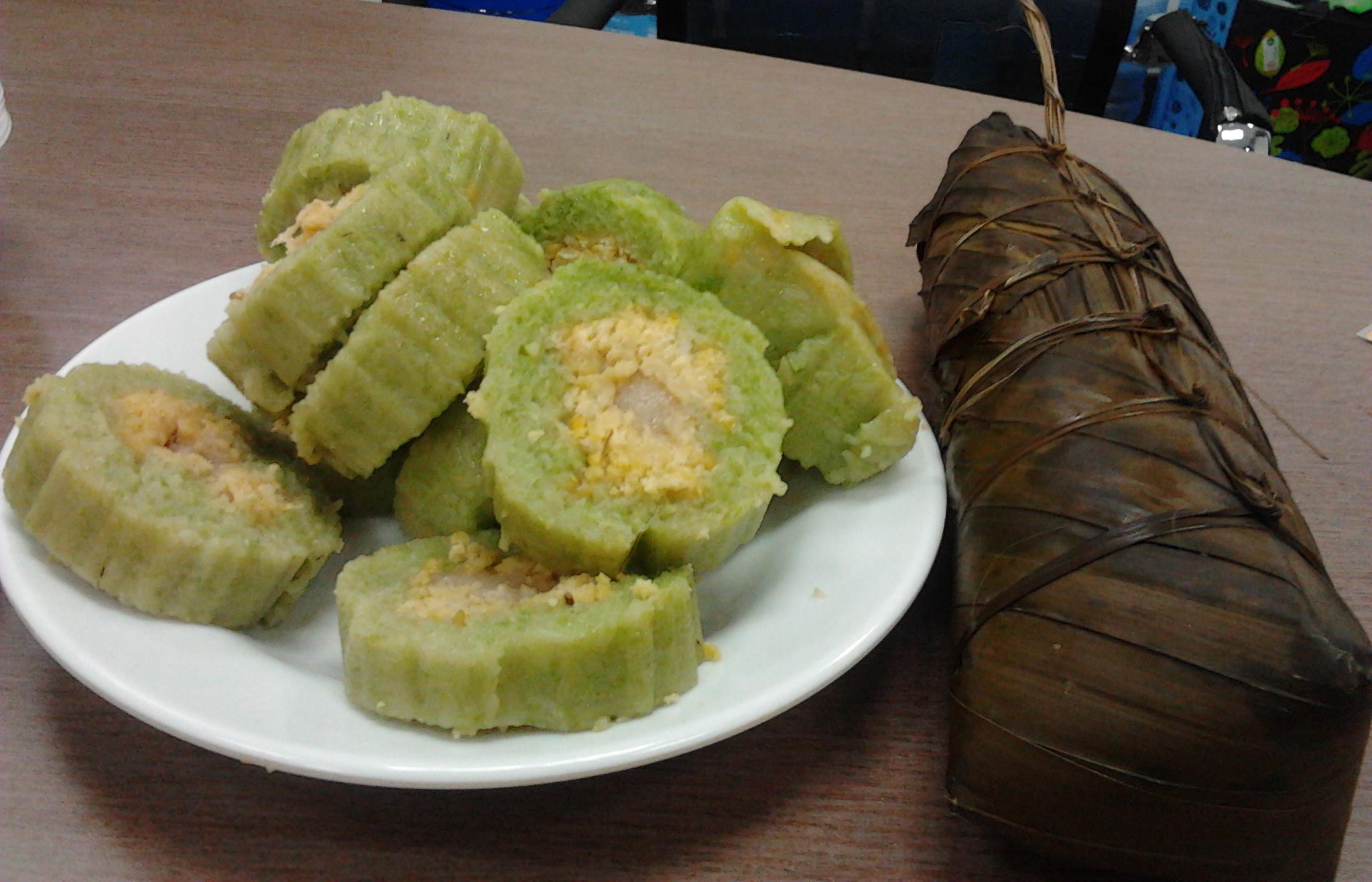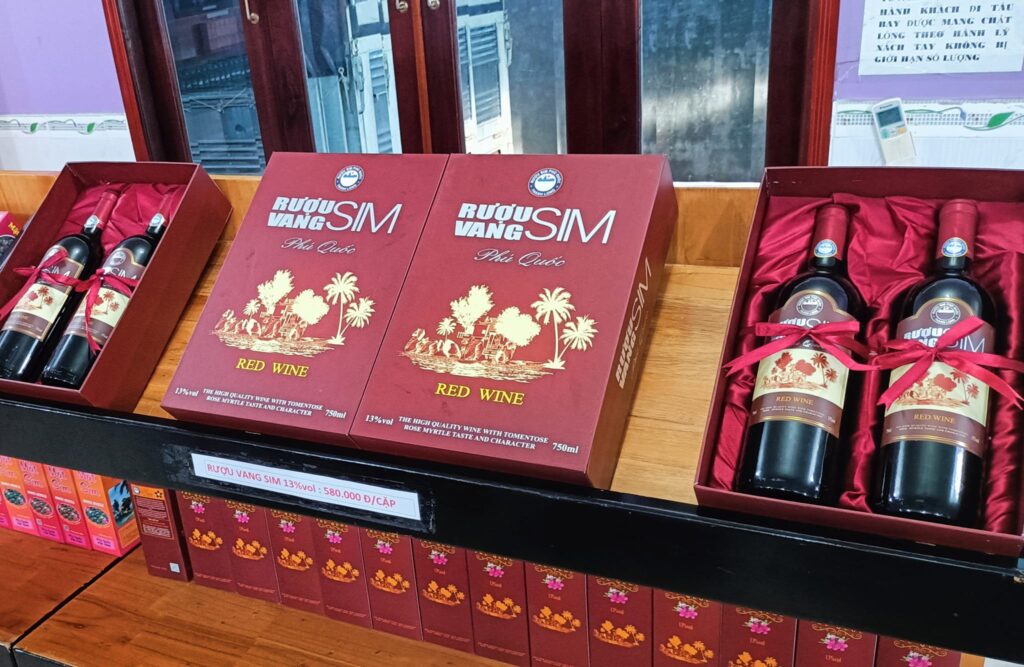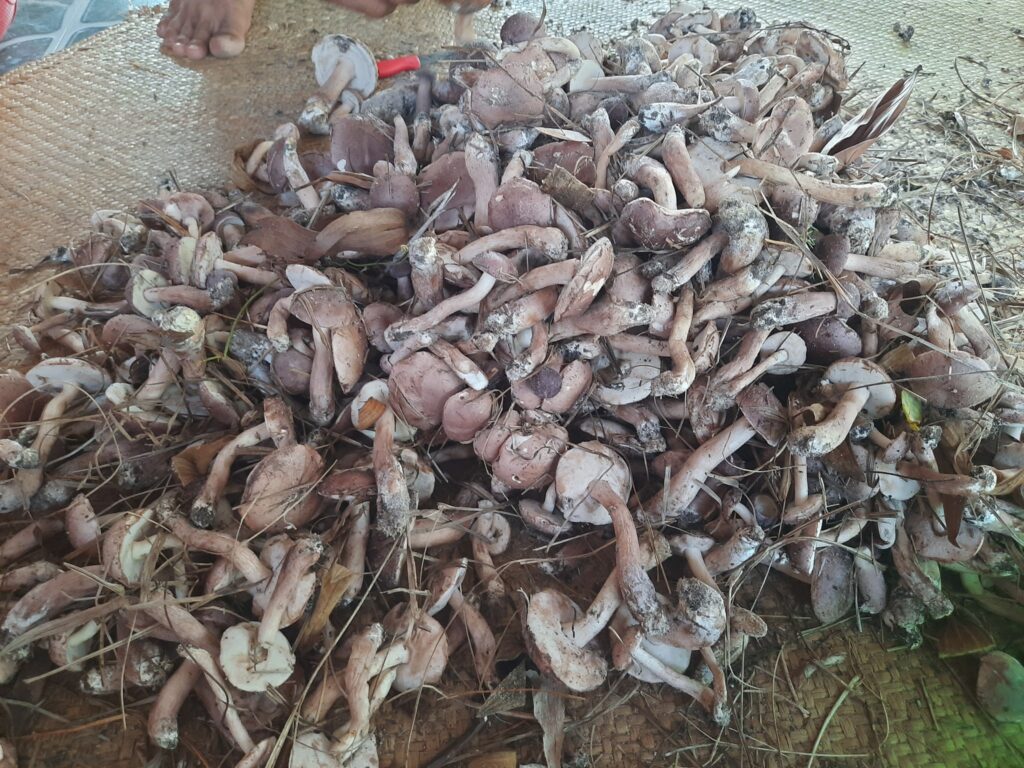Among Phú Quốc’s many specialties, the coconut-palm-leaf sticky rice cake stands out for its distinctive flavor and its one-of-a-kind wrapping method. More than just a traditional dish, it represents the cultural soul of the island—simple, delicate and deeply tied to the identity of the local people. Unlike mainland sticky rice cakes wrapped in banana or lá dong leaves, the Phú Quốc version uses coconut-palm leaves collected from the Hàm Ninh mountain range, the highest and oldest forested area on the island. These leaves are narrow, firm and tough, making the wrapping process extremely difficult and requiring real craftsmanship. Their natural aroma gently infuses the rice during cooking, creating a subtle forest scent that only Phú Quốc’s version possesses.
Selecting leaves is the first and most important step. Locals must hike deep into the Hàm Ninh forest to cut fresh leaves, leave them to soften slightly under the sun so they don’t break, wash them carefully and brush on a thin layer of oil to make the surface flexible. Treating the leaves properly ensures that the cake won’t tear during wrapping or boiling, and that it keeps its beautiful shape afterward. The ingredients themselves are simple but require careful preparation. The glutinous rice must be fragrant, tender and uniform. After rinsing, it is mixed with coconut milk and the juice of bó ngót leaves to create the cake’s signature jade-green color. The filling is traditional: mashed mung beans and small cubes of pork fat that, once cooked, turn rich, creamy and perfectly balanced with the mild aroma of pandan and the forest scent of the coconut-palm leaves.
Wrapping the cake is considered the most challenging technique among all Vietnamese sticky-rice cakes. Because the leaves are narrow, the maker must overlap many layers tightly without leaving gaps. The cake is tied not with soft strings but with fibers from the same coconut-palm leaf—thick, tough and difficult to handle. Each cake is about 30 cm long, wrapped in a triangular-shaped bundle but with a rounded body, requiring precise tension in every knot. Tie too tightly and the cake won’t cook through; tie too loosely and water seeps in, making the rice mushy. Only skilled artisans with years of practice can produce cakes that are perfectly shaped, firm and smooth—true to the Phú Quốc standard.
Once wrapped, the cakes are boiled in a large pot for six to seven hours. Throughout the process, the maker must watch the fire carefully, add hot water when needed and turn the cakes at the right time. When fully cooked, they release a gentle aroma of sticky rice, coconut milk, mung beans, pork fat and the unmistakable scent of the forest leaves—a fragrance both comforting and uniquely Phú Quốc. Once unwrapped, the cake reveals its beautiful jade-green color and a soft, soothing aroma. Each bite brings a harmonious blend of tender sticky rice, creamy mung beans, savory pork fat, the subtle flavor of pandan, a hint of forest fragrance and a refreshing cool note from the bó ngót juice. Unlike many southern sticky-rice cakes, the Phú Quốc version does not contain excessive coconut milk, so it keeps well for five to seven days while remaining soft, moist and flavorful.
Visitors can easily find these cakes at Dương Đông Market, the Phú Quốc Night Market, specialty stalls in Hàm Ninh or from households in Suối Đá and Suối Lớn. There are typically two sizes available: a large cake priced around 10,000 VND and a small one for about 5,000 VND—modest prices for such a unique handmade delicacy.
The most famous family preserving this tradition is that of Ms. Hồ Thanh Tuyết in Suối Đá hamlet, Dương Tơ commune. The craft has been passed down for three generations, and Ms. Tuyết herself has more than 30 years of experience. Her daughter is now continuing the craft, and the family makes and sells cakes daily while also accepting orders year-round. During the Lunar New Year holiday, they produce around four thousand cakes, yet they still cannot meet demand because the coconut-palm leaves are becoming increasingly rare—often requiring an entire day of searching in the forest—and because the wrapping technique is extremely difficult, leading to fewer young people willing to learn and preserve the craft. “You need patience and passion to keep this craft alive. It’s hard work, but this cake carries the spirit of the island. It would be a great loss if it disappeared,” Ms. Tuyết shares.
Although modern cuisine offers countless new dishes, the coconut-palm sticky rice cake remains a symbol of reunion, family warmth and island heritage on every Phú Quốc festive table. For locals, it is a taste of home. For visitors, it becomes a lasting memory of the island—its nature, its people and its deeply rooted traditions. More than just food, this cake is a cultural treasure of Phú Quốc. Anyone visiting the island should try it at least once and bring a few cakes home as gifts. Its fragrant aroma, unique wrapping style and naturally beautiful color make it an unforgettable specialty of the Pearl Island.








